Spring is Almost Here! Chilean Grapes & Juices + South African Juices Available For Purchase
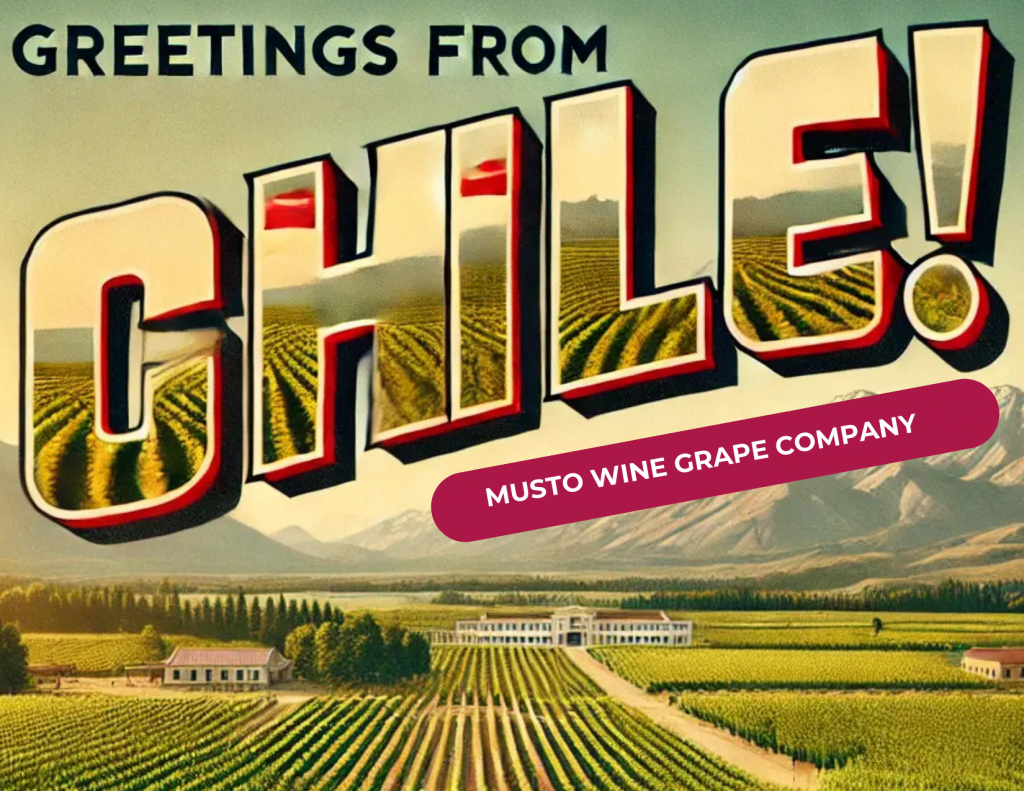
Hey Winemakers,
Spring harvest is officially in motion, and we’ve got premium Chilean grapes, Chilean juices, and South African juices ready for order! If you’re looking to craft something special this season, now’s the time to secure what you need before we sell out.
This Spring’s Offerings:
Chilean Grapes & Juices – Fresh, high-quality fruit and juices for bold, structured wines
South African Juices – Unique flavors and exceptional quality, perfect for trying something different
Seamless Pickup & Delivery – Our logistical network ensures you get the freshest product, hassle-free
Orders are first-come, first-served, and things are moving fast! Let us know what you need, and we’ll take care of the rest.
Looking forward to another great season—let’s make some wine!
- From Chile:
- Grapes Varieties: Carmenere, Cabernet Sauvignon, Cabernet Franc, Malbec, Merlot, Pinot Noir, Syrah, and Sauvignon Blanc
- Juice Varieties: Carmenere, Cabernet Sauvignon, Cabernet Franc, Cabernet/Merlot Blend, Malbec, Merlot, Petite Verdot, Pinot Noir, Syrah, Chardonnay, Pinot Grigio, Sauvignon Blanc, and Viognier.
- Fresco Juice Varieties: Cabernet Sauvignon, Carmenere, Malbec, Merlot, Chardonnay, Chardonnay-Semillon, Sauvignon Blanc, Viognier
- From South Africa:
- Juice Varieties: Shiraz, Merlot, Pinotage, Cabernet Sauvignon, Semillon, Chardonnay, Pinot Grigio, Chenin Blanc, Sauvignon Blanc
- Fresco Juice Varieties: Cabernet Sauvignon, Pinotage, Shiraz, Sauvignon Blanc
Winemaking Resources to Support Your Craft
At Musto Wine Grape Co., we know that great wine starts with the right tools and knowledge. That’s why we offer everything you need to make the most of your spring winemaking season:
- Educational Videos: Learn step-by-step techniques with our in-depth winemaking courses at WinemakingInstructions.com.
- Equipment and Supplies: From fermenters to presses, we have everything you need to get started or upgrade your setup.
- Consulting Services: Our experienced winemakers are available year-round to answer questions and guide you through the process.
Contact Us to Get Started!
Sincerely,
The Musto Crush Crew
📞 Phone: 860-278-7703
📧 Email: sales@juicegrape.com
🌐 Website: www.juicegrape.com
Cheers to a successful spring winemaking season! 🍇🍷
Spring Into Winemaking: Discover Musto Wine Grape Co.’s Spring Offerings
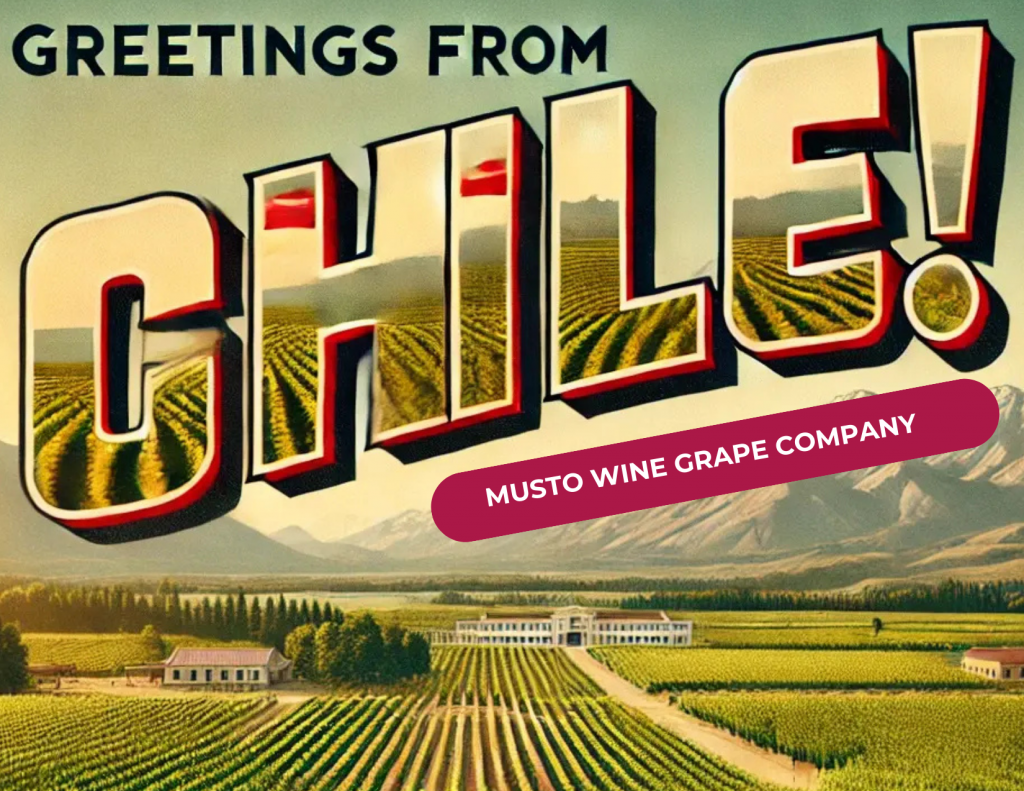
Spring Into Winemaking: Discover Musto Wine Grape Co.’s Spring Offerings
As the days grow warmer and the promise of spring approaches, it’s time for winemakers to prepare for an exciting new season of crafting exceptional wines. At Musto Wine Grape Co., we’re thrilled to bring you our spring lineup of premium grapes, juices, and winemaking resources to help you create your next masterpiece. Whether you’re a seasoned winemaker or just starting your journey, our spring offerings are here to inspire and support your passion.
Chilean Grapes and Juices: The Best of the Southern Hemisphere
Spring marks the arrival of our highly anticipated Chilean grapes and juices. Known for their exceptional quality and bold flavors, Chilean products offer winemakers a unique opportunity to craft wines with depth, character, and global appeal.
Why Choose Chilean Grapes and Juices?
- Premium Varieties: Chilean products deliver versatility and quality, from rich reds like Cabernet Sauvignon and Carménère to vibrant whites like Sauvignon Blanc and Chardonnay.
- Ideal Terroir: Grown in Chile’s renowned valleys, these grapes benefit from the country’s perfect climate and fertile soils, producing wines with unparalleled flavor.
- Freshness Guaranteed: Our Chilean grapes and juices are handled carefully to maintain their freshness and quality during transport.
- From Chile:
- Grapes Varieties: Carmenere, Cabernet Sauvignon, Cabernet Franc, Malbec, Merlot, Pinot Noir, Syrah, and Sauvignon Blanc
- Juice Varieties: Carmenere, Cabernet Sauvignon, Cabernet Franc, Cabernet/Merlot Blend, Malbec, Merlot, Petite Verdot, Pinot Noir, Syrah, Chardonnay, Pinot Grigio, Sauvignon Blanc, and Viognier.
- Fresco Juice Varieties: Cabernet Sauvignon, Carmenere, Malbec, Merlot, Chardonnay, Chardonnay-Semillon, Sauvignon Blanc, Viognier
South African Juices: A Taste of Innovation
We’re also excited to offer premium juices from South Africa, a wine region celebrated for its dynamic and distinctive wines. Spring winemaking with South African juices allows you to explore bold reds like Pinotage or crisp whites like Chenin Blanc.
Why South African Juices?
- Unique Varietals: South Africa’s diverse terroir and rich winemaking history bring a fresh perspective to your cellar.
- Sustainability Focus: Many South African vineyards prioritize eco-friendly practices, ensuring high-quality and ethically produced wines.
- From South Africa:
- Juice Varieties: Shiraz, Merlot, Pinotage, Cabernet Sauvignon, Semillon, Chardonnay, Pinot Grigio, Chenin Blanc, Sauvignon Blanc
- Fresco Juice Varieties: Cabernet Sauvignon, Pinotage, Shiraz, Sauvignon Blanc
Sterile Juices: Year-Round Convenience
Not quite ready for fresh grapes? Our sterile juices are the perfect option for winemakers looking for convenience without compromising quality. These juices are available year-round, allowing you to make wine on your schedule.
Top Benefits of Sterile Juices:
- Consistent Quality: Sterile juices provide reliable results, making them perfect for beginners and experienced winemakers.
- Wide Range of Varietals: Explore options like Zinfandel, Merlot, Riesling, and more.
- Easy to Use: No crushing or destemming required—just ferment and enjoy!
Winemaking Resources to Support Your Craft
At Musto Wine Grape Co., we know that great wine starts with the right tools and knowledge. That’s why we offer everything you need to make the most of your spring winemaking season:
- Educational Videos: Learn step-by-step techniques with our in-depth winemaking courses at WinemakingInstructions.com.
- Equipment and Supplies: From fermenters to presses, we have everything you need to get started or upgrade your setup.
- Consulting Services: Our experienced winemakers are available year-round to answer questions and guide you through the process.
Get Ready for Spring Winemaking
Spring is a time for new beginnings, and there’s no better way to celebrate the season than by crafting your wine. Musto Wine Grape Co. has you covered if you’re looking to try a new varietal, experiment with blending, or restock your cellar.
Don’t wait—our Chilean grapes, South African juices, and sterile juice options are in high demand and won’t last long. Reserve your order today and get ready to create wines as vibrant and memorable as the season itself.
Contact Us to Get Started
📞 Phone: 860-278-7703
📧 Email: sales@juicegrape.com
🌐 Website: www.juicegrape.com
Cheers to a successful spring winemaking season! 🍇🍷
Unveiling the Artistry Behind Chilean Wine: A Toast to Excellence
In the world of winemaking, few regions can boast the combination of unique terroir, skilled artisans, and a rich cultural history quite like Chile. Nestled between the Andes Mountains and the Pacific Ocean, this South American gem has been quietly gaining recognition as a powerhouse in the global wine industry. Let’s embark on a journey to discover why making Chilean wine is nothing short of an art form.
The Terroir Advantage:
Chile’s diverse geography, ranging from the arid Atacama Desert to the cool, maritime-influenced climate of the coastal areas, provides winemakers with a canvas of terroirs. The result is a wide spectrum of flavors and aromas that make Chilean wines unique. From the robust reds of Curico Valle, each sip reflects the character of its terroir.
Sustainable Practices:
Chilean winemakers have embraced sustainable and organic practices, aligning their craft with environmental consciousness. Many vineyards prioritize biodiversity, water conservation, and minimal chemical intervention. This commitment not only preserves the pristine landscapes but also enhances the purity and authenticity of the wines produced.
Iconic Grape Varieties:
Chilean winemaking is defined by its dedication to traditional grape varieties, with a particular focus on Carmenere, often referred to as Chile’s signature grape. This once-forgotten Bordeaux varietal found its new home in Chile, producing wines with luscious dark fruit flavors and a distinct spiciness. Cabernet Sauvignon, Merlot, and Sauvignon Blanc also thrive in the fertile soils, contributing to the country’s diverse wine portfolio.
Innovation and Modern Techniques:
While honoring tradition, Chilean winemakers are not afraid to embrace innovation. State-of-the-art winemaking facilities equipped with modern technology allow for precise control over the winemaking process. This fusion of tradition and innovation ensures the consistency and quality of Chilean wines, earning them accolades on the international stage.
In the world of winemaking, Chile stands as a testament to the perfect marriage of nature’s gifts and human craftsmanship. The artistry behind making Chilean wine is a celebration of terroir, sustainability, iconic grape varieties, and a commitment to excellence. So, the next time you uncork a bottle of Chilean wine, savor not just the liquid in the glass but the story of a nation passionate about producing wines that captivate the senses.
Interested in making South African or Chilean Wine? Give us a call at 877-812-1137 to speak to a winemaking representative about your order. Cheers!
Chilean Wine Notes
Why make wine from Chile? Because it’s like bottling up sunshine and smiles!
Picture this: rolling vineyards nestled between the Andes Mountains and the Pacific Ocean, where grapes bask in the perfect blend of cool coastal breezes and warm, sunny days. Chile’s diverse terroir makes it a winemaker’s paradise, offering a kaleidoscope of flavors just waiting to be uncorked.
CHILEAN WINE NOTES
Cabernet Sauvignon:
A flagship for Chile, their Cabernet Sauvignon impresses with its deep ruby color and complex aromas of blackcurrant, cherry, cedar, and tobacco. On the palate, it’s rich and full-bodied, with well-integrated tannins and a long, lingering finish.
Cabernet Franc:
Cabernet Franc from Chile offers an elegant expression of the varietal. With aromas of red berries, violet, and herbs, it’s vibrant and aromatic. On the palate, it’s medium-bodied with silky tannins and a fresh, persistent finish.
Carmenere:
Chilean Carmenere showcases the best of Chile’s signature grape. With deep purple color and aromas of blackberry, plum, and spices, it’s captivating. Lush and velvety on the palate, with flavors of ripe fruit, chocolate, and a touch of smokiness.
Malbec:
A standout example of great winemaking grapes, the Chilean Malbec boasts intense aromas of blackberry, plum, and violet, with hints of vanilla and spice. On the palate, it’s full-bodied and expressive, with ripe tannins and a long, smooth finish.
Merlot:
Chilean Merlot offers aromas of ripe plum, cherry, and spices, with subtle hints of chocolate and vanilla. Medium-bodied and smooth on the palate, with soft tannins and a lingering finish.
Pinot Noir:
The Chilean Coastal Pinot Noir exhibits delicate aromas of red fruits, flowers, and earthy notes. Light-bodied and elegant, with vibrant acidity and silky tannins, it’s a perfect expression of Chilean terroir.
Syrah:
Syrah from Chile showcases the richness and depth. With aromas of blackberry, blueberry, and pepper, it’s intense and alluring. Full-bodied and velvety on the palate, with layers of dark fruit, spice, and a long, lingering finish.
Chardonnay:
From the cool-climate region of Chile, Chardonnay offers aromas of tropical fruits, citrus, and vanilla. Medium to full-bodied, with a creamy texture and balanced acidity, it’s a delightful expression of Chilean Chardonnay.
Pinot Grigio:
Pinot Gris from Chile showcases fresh aromas of green apple, pear, and citrus, with floral undertones. Crisp and refreshing on the palate, with lively acidity and a clean, mineral-driven finish.
Sauvignon Blanc:
Chilean Sauvignon Blanc has aromas of grapefruit, lime, and herbs. Crisp and vibrant on the palate, with zesty acidity and a refreshing finish.
Viognier:
Viognier from Chile displays enticing aromas of apricot, peach, and orange blossom, with hints of honey and spice. Medium-bodied and luscious on the palate, with a smooth, lingering finish.
Interested in making Chilean Wines? We have the grapes and juices! Give us a call at 877-812-1137 to speak to a winemaking representative about your order. Cheers!
Cheers to Spring Winemaking Adventures!
Hey there, fellow vintners and grape aficionados,
As the frost thaws and the vines awaken from their winter slumber, can you feel that excitement bubbling up like a well-aged Cab Sauv? That’s right, it’s time to dust off those barrels, polish those glasses, and get ready to dive headfirst into the spring winemaking season!
Whether you’re dreaming of crisp Chardonnays, robust Merlots, or something in between, now’s the time to get those orders in. From grapes, juices, fermenting tanks, corks, and everything in between, we’ve got you covered. So, why wait? Let’s uncork the magic of spring together!
2024 Spring Grape Offerings:
Chile: Cabernet Sauvignon, Cabernet Franc, Carmenere, Malbec, Merlot, Petite Verdot, Pinot Noir, Syrah, Chardonnay, Pinot Grigio, Sauvignon Blanc, and Viognier
2024 Spring Juice Offerings:
South Africa: Shiraz, Merlot, Pinotage, Cabernet Sauvignon, Semillon, Chardonnay, Pinot Grigio, Chenin Blanc, and Sauvignon Blanc.
Chile: Cabernet Sauvignon, Cabernet Franc, Carmenere, Malbec, Merlot, Petite Verdot, Pinot Noir, Syrah, Chardonnay, Pinot Grigio, Sauvignon Blanc, Viognier, and Muscat.
Crush/Destemm will be back!
We will be crushing and destemming again this year! However, there is a minimum order of 24 cases of Spring grapes. This will give you 6 pails of must, and about 20+ gallons of juice to work with.
Winemaking Classes:
Check out Musto Wine Grape & Frank Renaldi’s online classes via our sister site WinemakingInstructions.com.
Winemaker Hours:
Winemaker Sam Lee will be in the store and available for questions on Tuesdays and Fridays from 8:00AM-4:00PM. If you want to speak to a winemaker in person, make sure to stop by and see Sam! You can also email him at slee@juicegrape.com.
March Store Hours:
Mon-Fri: 8:00AM-4:00PM
Sat-Sun: Closed
Ready to take your winemaking to new heights? Simply shoot us an email or give us a call, and we’ll make sure you’re all set to rock this winemaking season.
Here’s to the grape adventures ahead!
Quick Spring Winemaking Season Update
Quick Spring Winemaking Season Update
Helo Winemakers,
I hope this finds you well and in good spirits. The South African and Chilean vineyards have been buzzing with activity as we start to embark on our spring winemaking season. As we look forward to the beauty of spring, I wanted to share an exciting update on our spring winemaking offerings. Below you will find this season’s offerings as well as tentative arrival times. As the season progresses, we will send you more information. But for now, check out our blog and keep an eye out for some spring winemaking inspiration!
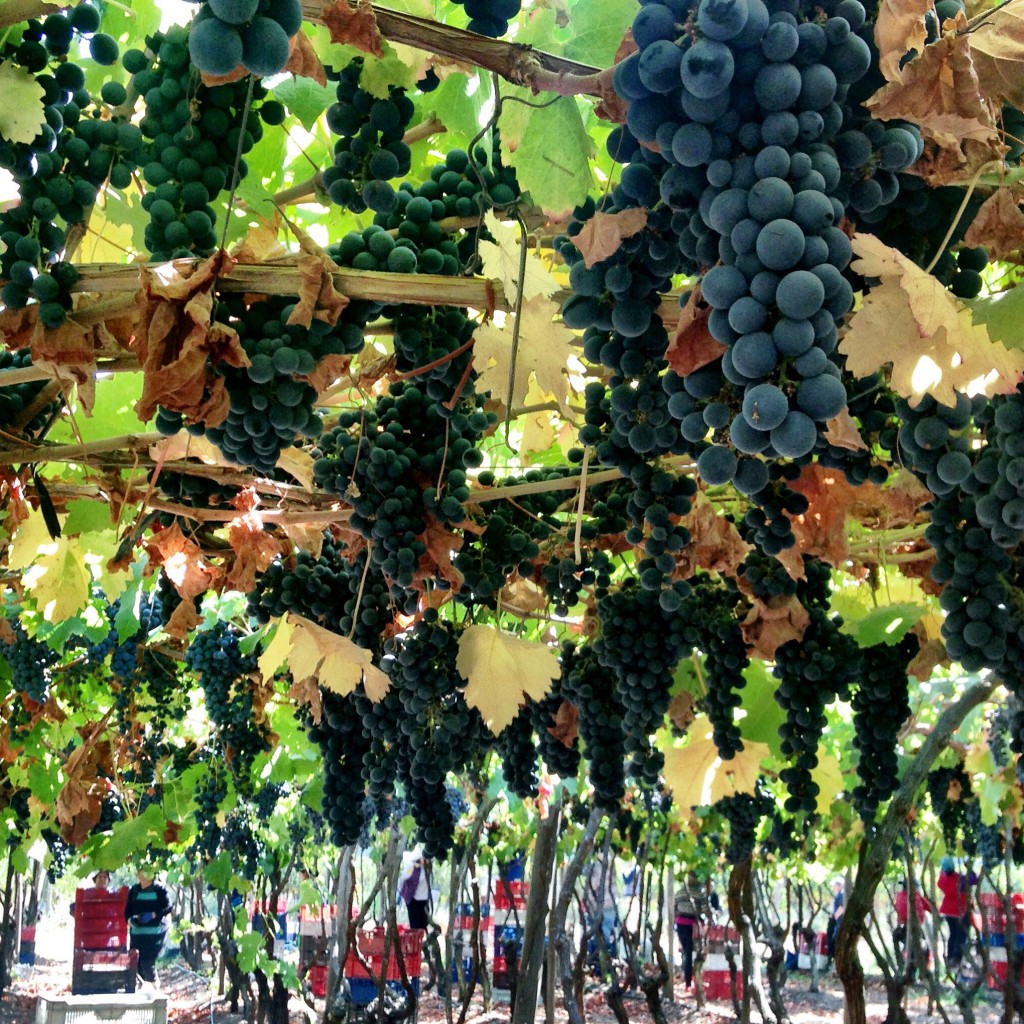
South African Season:
Arriving: End of March
Juice Varieties: Shiraz, Merlot, Pinotage, Cabernet Sauvignon, Semillon, Chardonnay, Pinot Grigio, Chenin Blanc, Sauvignon Blanc
Fresco Juice Varieties: Cabernet Sauvignon, Pinotage, Shiraz, Sauvignon Blanc
Chilean Season:
Arriving: End of April, beginning of May
Grapes Varieties: Carmenere, Cabernet Sauvignon, Cabernet Franc, Malbec, Merlot, Petite Verdot, Pinot Noir, Syrah, Chardonnay, Pinot Grigio, Sauvignon Blanc, and Viognier
Juice Varieties: Carmenere, Cabernet Sauvignon, Cabernet Franc, Cabernet/Merlot Blend, Malbec, Merlot, Petite Verdot, Pinot Noir, Syrah, Chardonnay, Pinot Grigio, Sauvignon Blanc, and Viognier.
Fresco Juice Varieties: Cabernet Sauvignon, Carmenere, Malbec, Merlot, Chardonnay, Chardonnay-Semillon, Sauvignon Blanc, Viognier
Interested in making South African or Chilean Wine? Give us a call at 877-812-1137 to speak to a winemaking representative about your order. Cheers!
2023 Chilean Winemaking Harvest Update
2023 Chilean Winemaking Harvest Update
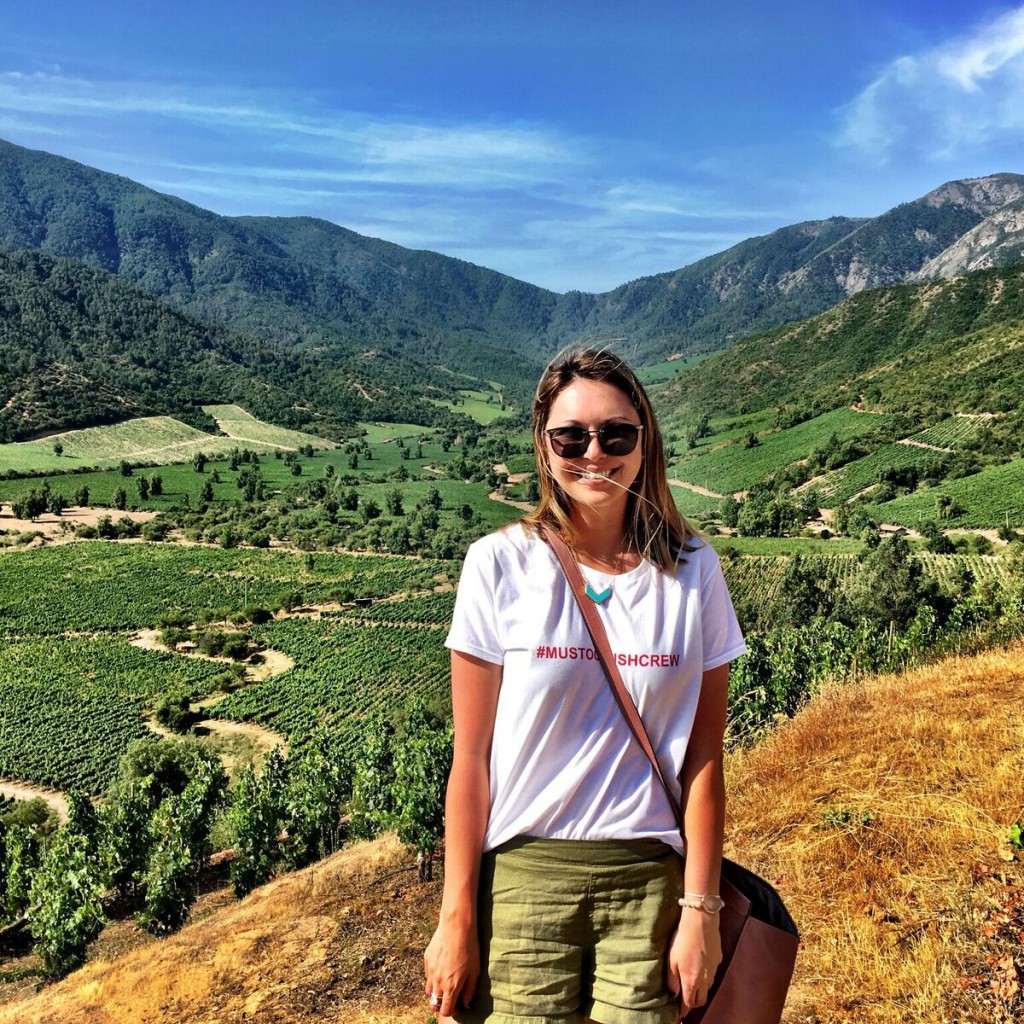
{above photo from our trip to chile a few years ago}
Hello, Winemakers! It’s time to get ready and prepped for the Chilean grape and juice arrival. The Chilean Winemaking Season starts in early April and ends in May. Our growers have planned to start harvesting white wine grapes around March 15th and red grapes around March 23rd. Once on the boat, we will have a better update on delivery timing.
Musto’s 2023 Chilean Offerings:
Chile Grapes: Cabernet Sauvignon, Cabernet Franc, Carmenere, Malbec, Merlot, Petite Verdot, Pinot Noir, Syrah, Chardonnay, Pinot Grigio, Sauvignon Blanc, and Viognier
Chilean Juice: Cabernet Sauvignon, Cabernet Franc, Carmenere, Malbec, Merlot, Petite Verdot, Pinot Noir, Syrah, Chardonnay, Pinot Grigio, Sauvignon Blanc, Viognier, and Muscat.
Chilean Viticulture:
Chile is the same latitude as northern California! Chileans can grow many different types of grapes here, just like in California. The cooling influences they receive from the Pacific Ocean, the Andes Mountains, and the warm and plentiful sunshine attributes to their wine-growing success. Their warm Mediterranean climate helps the grapes to ripen. The Humboldt current, flows up from Antarctica, along the Chilean coast, pushing the cool air inland by the wind patterns. This cooling effect helps cool off the grapes while they mature. Colchagua and Curico Valley both benefit from this ocean influence, which allows these regions to produce grapes from fertile soil for wines that are gaining premium reputations.
The Curico and Colchagua Valleys have some of the best soils in Chile, composed of mostly sand, clay, decomposed granite, and volcanic-alluvial. These regions only receive around 23.3 inches of rainfall per year and little to no rainfall during their summer months. The grapes are safe as harvest approaches, and the weather ensures that the grapes are fighting for water and creating a more intense fruit.
What are Brix?
The harvest is based on sugar levels in the grapes. This information comes from a simple measurement called degrees brix (also known as specific gravity). It’s important because it tells us how much water is present in our must (the mixture of crushed grapes and yeast starter). The lower this number is, the more concentrated or “dry” your wine will be when finished fermenting. The ideal Brix levels for red wines is 23-25 Brix, and for white wines 21-24 Brix.
How are the grapes harvested?
The grapes are handpicked. The pickers walk through rows of vines looking for clusters of ripe fruit to cut off with long-handled knives called “cortadores.” They then gently place these into plastic tubs where they’re carried back to trailers parked nearby–a process that takes place over several days (usually during the morning). Once all of this has been completed successfully, we begin our shipping process!
How do you know when to harvest the grapes?
The wine grape harvest is based on sugar levels in the grapes: if they’re too low you can’t make good wine; too high and it will taste too sweet and you’ll most likely have a stuck fermentation. Each month/week/and as harvest nears, day – the grapes are sampled in the field to see if they have reached their optimum levels yet.
Shipping from Chile to MWG…
Once the grapes arrive at port they are sent to Musto Wine Grape Co. and we unload them into our coolers. Everything is shipped in a refrigerated container and never breaks the cold chain. This ensures that the high quality of the fresh Chilean products are intact. After they arrive it is time for you to pick up your grapes and/or juices and get winemaking!
2023 Chilean Harvest Update:
The Chilean crop looks excellent this season. We are hoping to see the Chilean grapes and juices arrive at around 23-25 Brix, very sweet and juicy. Arrival dates look to be somewhere at the end of April / early May depending on the type of winemaking grape/juice. Give us a call (877-812-1137) or email us at sales@juicegrape.com with any arrival questions.
Fun Fact About Chile: Chile produces more than 1 million tons of grapes every year!
Chilean wine making is a time-honored tradition, and the results are worth it! This will be 18+ years of Musto Wine Grape working with our Chilean vineyards and every year the wines created get better and better. We hope you enjoyed learning about the Chilean wine-making season. It’s an interesting process that requires a lot of work, but in the end, it pays off with delicious wines!
For more information on making wine from Chile check out these blogs posts:
- 7 Tips for How to Prep for the Chilean Wine Harvest
- Bud Break in Chile
- How to Make Chilean Cabernet
- Crushing Chilean Malbec Grapes
- Making Chilean Carmenere
- Wine Spotlight: Chilean Carmenere
- How to Make Wine from Chilean Juice
- How Much Wine Will A Case of Grapes from Chile or South Africa Make?
- Details from Our Trip to Chile
- Notes on Making Sauvignon Blanc from Chile
- Video About Curico Valley
- Winemaker Interview with Manuela Astaburuaga from Our Chilean Vineyards
- Our Wine Grapes of Chile Video
Can I make my own? Musto Wine Grape Company is here to help you make the wine of your dreams! The Spring South African & Chilean winemaking season starts soon! Secure your winemaking grapes or juices and give us a call at (877) 812-1137 to speak with one of our Musto Crush Crew members. We can get you set up with everything you need and provide customer support along the way to ensure your success!
Spring Harvest Menu
The Spring Harvest Menu is now available to download HERE
Browse what’s available to create this Spring and give us a call (877-812-1137) or email us (sales@juicegrape.com) to secure your order!
Wine Grape Spotlight – Malbec
Malbec is a grape variety with a deep, inky color, producing dry red wines that boast robust tannins and a long, smooth finish.
Where is Malbec from?
Malbec was almost exclusively grown in France, where it played a primary role as one of the main Bordeaux grapes. The climate and pests in France did not allow for Malbec to perform to its utmost potential. Struggling to thrive, growers saw it as weak, finicky, and susceptible to disease as well as rot. It is mainly associated with Argentina and Chile now because it thrives there. It took well to the climate, excelling in the high elevation and heat, making it one of the most widely planted grapes. In the United States, you can find the majority of wine grape plantings in California, yet Malbec only makes up for 0.5% of those plantings.
Malbec Characteristics
This grape can yield a wide range of fruit aromas that vary widely depending on the climate they are grown in. Cooler climates like France and Washington state yield black cherry, raspberry, and plum aromas. For warmer climates like Chile, you’ll get more blackberry, blueberry, plum, and black cherry. They’re juicy and jammy, with notes of vanilla, tobacco, dark chocolate, and oak. They have medium acid and moderate levels of tannins. Chilean Malbec’s boast with red fruit flavors like cherry, raspberry and have floral and slight earthy notes.
Can I make my own?
Musto Wine Grape Company is here to help you make the wine of your dreams! The Spring Chilean winemaking season starts in late April, early May. Secure your Malbec and give us a call at (877) 812-1137 to speak with one of our Musto Crush Crew members. We can get you set up with everything you need and provide customer support along the way to ensure your success!
2020 Spring Harves is Right Around the Corner!
As the Holiday season starts to wind down we can’t help but get excited for the coming Spring wine season. We will have more updates in the coming weeks, but why not check out a video from the 2019 Chilean Wine Grape Harvest?
Arriving:
End of April, beginning of May
Grape Varieties:
- Carmenere
- Cabernet Sauvignon
- Cabernet Franc
- Malbec
- Merlot
- Petite Verdot
- Pinot Noir
- Syrah
- Chardonnay
- Pinot Grigio
- Sauvignon Blanc
- Viognier
Juice Varieties:
- Carmenere
- Cabernet Sauvignon
- Cabernet Franc
- Cabernet/Merlot Blend
- Malbec
- Merlot
- Petite Verdot
- Pinot Noir
- Syrah
- Chardonnay
- Pinot Grigio
- Sauvignon Blanc
- Viognier
Fresco Juice Varieties:
- Cabernet Sauvignon
- Carmenere
- Merlot
- Malbec
- Chardonnay
- Sauvignon Blanc
- Viognier
- Chardonnay/Semillon Blend
Yeast Suggestions:
- Cabernet: CSM – New Yeast Coming to Musto Wine Grape in the Spring!, Keep an eye for a blog post about in on Thursday’s Winemaker Think Tank!
- Malbec: D254: Brings out bright fruit flavors and complexity such as berry, plum, and mild spice.
- Carmenere: D254: Brings out bright fruit flavors and complexity such as berry, plum, and mild spice or BDX: Promotes soft tannins, secures color, and ferments at low heat.
- Chardonnay: QA23: Promotes apple and pear notes or VIN13: Heightens pineapple and tropical notes
- Sauvignon Blanc: R2: Promotes fruity and floral notes or 71B: Brings out grapefruit notes and other tropical fruits or QA23: Promotes apple and pear notes or VIN13: Heightens pineapple and tropical notes
So pour yourself a glass of wine and give us a call or shoot us an email to secure your Pre-Order Today!






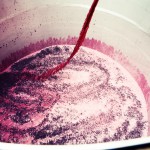
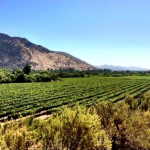
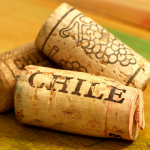
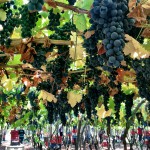
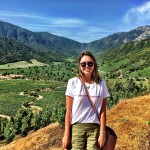
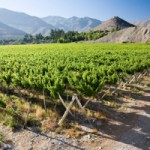
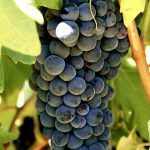
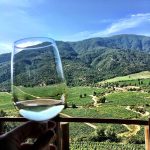
Recent Comments